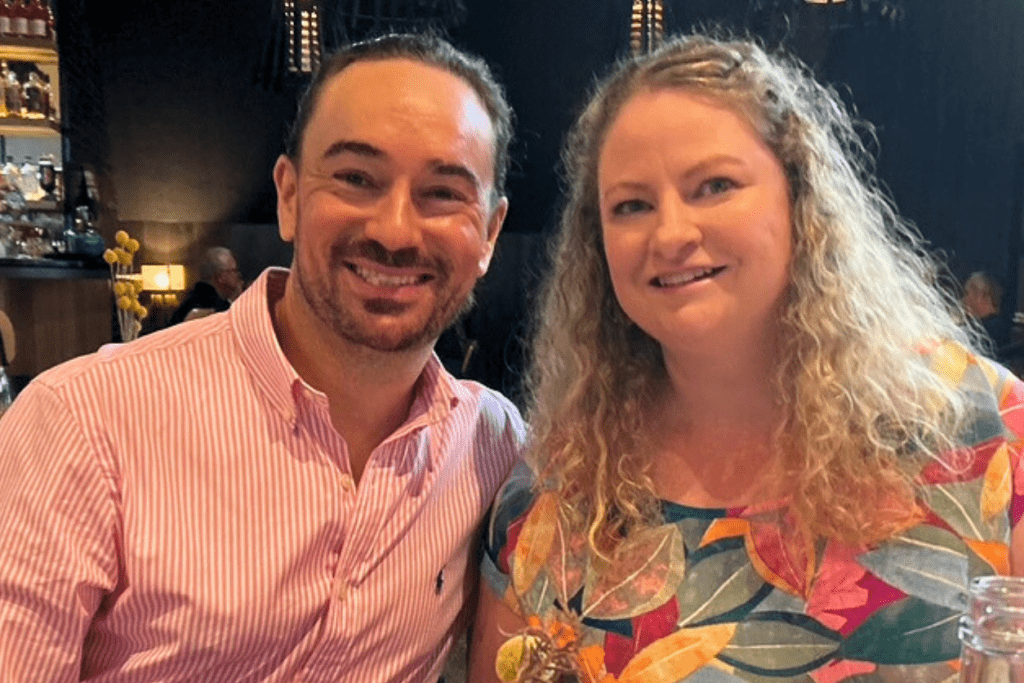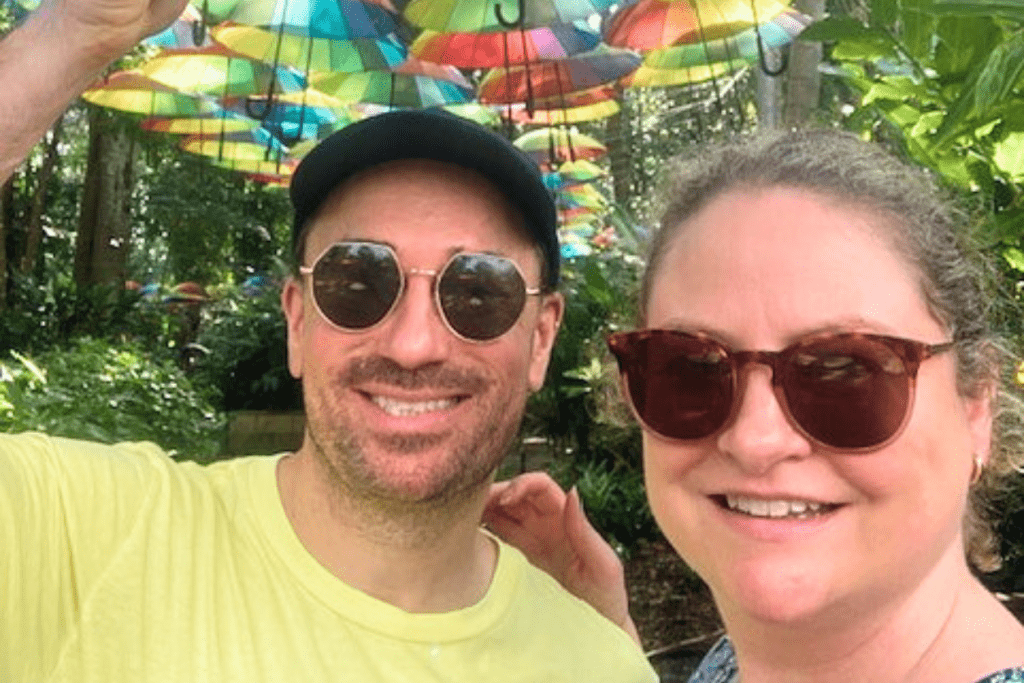Andy's journey

Andy was a fit 44-year-old marketing executive who worked at one of Australia’s largest breweries. One Friday in April 2023, while beginning his morning workout, Andy experienced what would be the first of six seizures across three consecutive mornings.
“I started to feel quite a strong cramp down my left-hand side, and it was quite unusual. Pins and needles quickly spread into my left shoulder, arm and hand, before the entire left side of my body was vibrating uncontrollably. I thought I might be having a heart attack, but regardless I knew straight away it was unusual and serious.”
A rare diagnosis
After two visits to the emergency department at his local hospital, Andy was sent home with a diagnosis of ‘muscle spasms’. But by the third day, his seizures persisted. “I was admitted for further investigation, and upon MRI a ‘golf ball’ size lesion in the right hemisphere of my brain was discovered.”
“It was the frontal parietal lobe of the brain, sort of somewhere in the middle on the right-hand side of the brain.” “I was going downhill so quickly. They had to expedite the surgery, they confirmed it was a brain abscess.” “With an abscess, you have got the issue of draining it. They tend to try to drain it instead of removing it. It’s less invasive and then you have got to try and kill the infection in your brain. So, you go on antibiotic therapy which was about four to six weeks. On an IV drip for an hour, four times a day.”
What made Andy’s case even more complex was discovering the cause of his infection: a hole in his heart. After extensive tests, he was diagnosed with a Patent Foramen Ovale (PFO). “They think that allowed blood to bypass the filtering process in my lungs, which would normally kill the bacteria. That’s how the infection reached my brain.” Andy wants to share his story because of how rare a brain abscess is. “You tend to hear about strokes, brain tumours, and acute brain trauma more commonly, but I had never heard of a brain abscess before and found it quite hard to find much information on this less common type of brain injury.” “They don’t see so many brain abscesses, so weren’t sure what to expect in regard to my prognosis, and I really appreciated that they were honest with me about this.”
A new perspective
The speed and seriousness of Andy’s brain injury brought about profound self-reflection. “It was a real wake-up call for me and inspired a lot of self-reflection in those initial weeks and months, trying to come to grips with the impact it would have on all aspects of my life.” “It was a pretty unlucky set of circumstances, but I realised I had a choice: what attitude I wanted to have toward it. I thought, it’s happened, and I can’t change it. But there was so much good luck too.”
Andy focused on his recovery, not just for himself but for his partner Kelly, who stood by his side. “I promised her I’d do everything I could for myself and for her. It’s traumatic for your partner and family to see you go through something like this.”

Rehabilitation became Andy’s full-time job. He worked tirelessly with his doctors, neurologist, occupational therapist, physiotherapist, exercise physiologist and psychologists. “I couldn’t feed myself or walk at first, but I noticed these tiny micro improvements every day. They gave me hope. I realised if I put in the work, I’d see results.” “It’s easier said than done, but I really tried to be patient, take things moment by moment, and focus as much as possible on the things that were in my control. The overall trajectory of my recovery was one of gradual improvement, but it was punctuated by lots of up’s and down’s, the curve is not linear, it tended to be 1-2 steps forward, one step back.”
Despite his determination, Andy learned the hard way about the importance of rest. “I’m someone who doesn’t like to rest. Telling me to rest is like I’ll go, great, whatever, but I’m not going to rest. But eventually I had to acknowledge and accept that rest is just so important when recovering from a brain injury. As frustrating as it is, you just need to slow down, and get back to looking after yourself.”
He also discovered the concept of a ‘window of tolerance’. “Your window of tolerance is such an important concept for brain injury recovery, and it’s so easy to unwittingly find yourself outside of your window as you try to push your rehabilitation forward, and when I got it wrong I’d suffer some pretty debilitating fatigue, migraines and other symptoms. So one of the most challenging aspects of my recovery has been trying to walk this very fine line between the right amount of stimulus to make progress, but not so much that it sets you back. I’ve gotten better at this as I’ve gone along, but I still have times when I get it wrong.”
Finding purpose
Andy’s experience gave him a new outlook on life. “I spent years working 50- to 60-hour weeks in a corporate career, living to work. This was a reality check. Life is finite, and time is the most valuable thing we have. I started to focus on what truly matters—my partner, my family, my friends, and myself.” “In a strange way hospital life really helped me get back to basics as a lot of the usual noise and distractions aren’t there. Other than choosing your meals each day, you don’t have a lot of decisions to make, or options on how to spend your time and this helped remind me to appreciate and cherish the simple things in life.”
Grateful for the support he received during his recovery, Andy is now pursuing a new career as a health and wellbeing coach. “I’d love to work with people who’ve gone through their own life-changing health experience. There’s so much to learn about rehabilitation and living well after a major event like this, and I’d love to share some of my learnings with others to help them realise their fullest potential.”
Andy is also passionate about raising awareness of brain abscesses. “You hear about strokes, brain tumours, and trauma, but not brain abscesses. I found it hard to get information about this rare condition, and I’d love to support others who might be going through it.” Looking back, Andy sees a silver lining in his journey. Looking back, Andy sees a silver lining in his journey. “It’s strange to say, but I’m not sure if I would go back and undo it. This experience has taught me so much about myself. Without it, I don’t think I’d have stopped to reassess my life and make the changes I needed.”
If you’re interested in connecting with Andy to learn more about his experiences, please reach out to our marketing team via our email at marketing@synapse.org.au
Andy has been kind enough to share a video of his first 6 months of his recovery. The video captures the challenges he faced and the milestones he achieved. We applaud Andy on the amazing process he has made and cannot wait to see what he accomplishes next.